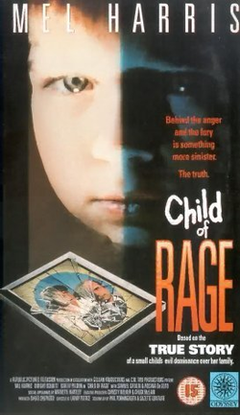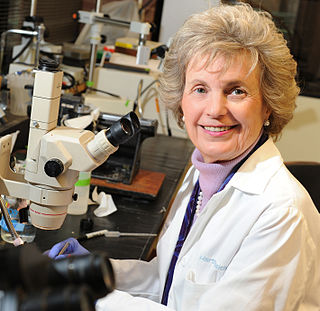Related Research Articles
Parental alienation is a theorized process through which a child becomes estranged from one parent as the result of the psychological manipulation of another parent. The child's estrangement may manifest itself as fear, disrespect or hostility toward the distant parent, and may extend to additional relatives or parties. The child's estrangement is disproportionate to any acts or conduct attributable to the alienated parent. Parental alienation can occur in any family unit, but is claimed to occur most often within the context of family separation, particularly when legal proceedings are involved, although the participation of professionals such as lawyers, judges and psychologists may also contribute to conflict.
Attachment disorder is a broad term intended to describe disorders of mood, behavior, and social relationships arising from unavailability of normal socializing care and attention from primary care giving figures in early childhood. Such a failure would result from unusual early experiences of neglect, abuse, abrupt separation from caregivers between three months and three years of age, frequent change or excessive numbers of caregivers, or lack of caregiver responsiveness to child communicative efforts resulting in a lack of basic trust. A problematic history of social relationships occurring after about age three may be distressing to a child, but does not result in attachment disorder.
Reactive attachment disorder (RAD) is described in clinical literature as a severe and relatively uncommon disorder that can affect children, although these issues do occasionally persist into adulthood. RAD is characterized by markedly disturbed and developmentally inappropriate ways of relating socially in most contexts. It can take the form of a persistent failure to initiate or respond to most social interactions in a developmentally appropriate way—known as the "inhibited form". In the DSM-5, the "disinhibited form" is considered a separate diagnosis named "disinhibited attachment disorder".

Complex post-traumatic stress disorder (CPTSD) is a stress-related mental disorder generally occurring in response to complex traumas, i.e. commonly prolonged or repetitive exposures to a series of traumatic events, within which individuals perceive few or no chance to escape.

Candace Elizabeth Newmaker was a child who was killed during a 70-minute attachment therapy session performed by 4 unlicensed therapists, purported to treat reactive attachment disorder. The treatment, during which Newmaker was suffocated, included a rebirthing script. She was wrapped in flannel to represent a womb and told to free herself. Newmaker was unable to free herself, lost consciousness, and later died.
Dyadic developmental psychotherapy is a psychotherapeutic treatment method for families that have children with symptoms of emotional disorders, including complex trauma and disorders of attachment. It was originally developed by Daniel Hughes as an intervention for children whose emotional distress resulted from earlier separation from familiar caregivers. Hughes cites attachment theory and particularly the work of John Bowlby as theoretical motivations for dyadic developmental psychotherapy.
Attachment therapy is a pseudoscientific child mental health intervention intended to treat attachment disorders. It is found primarily in the United States, and much of it is centered in about a dozen clinics in Evergreen, Colorado, where Foster Cline, one of the founders, established his clinic in the 1970s.

Child of Rage is a 1992 American biographical drama television film directed by Larry Peerce, starring Ashley Peldon and Mel Harris. The film is based on the true story of Beth Thomas, who had severe behavioral problems as a result of being sexually abused as a child. The film was shot in Vancouver, British Columbia, Canada, with classroom scenes being filmed at Mary Hill Elementary School. It premiered on CBS on Tuesday, September 29, 1992.
The floortime or Developmental, Individual-differences, Relationship-based (DIR) model is a developmental model for assessing and understanding any child's strengths and weaknesses. It has become particularly effective at identifying the unique developmental profiles and developing programs for children experiencing developmental delays due to autism, autism spectrum disorders, or other developmental disorders. This Model was developed by Dr. Stanley Greenspan and first outlined in 1979 in his book Intelligence and Adaptation. Evidence for the efficacy of DIR/Floortime includes results from randomized controlled trials of DIR/Floortime and the DIR/Floortime-based P.L.A.Y. Project; because of various limitations in these studies, the existing evidence is deemed to "weakly support" the efficacy of Floortime.
Childhood trauma is often described as serious adverse childhood experiences (ACEs). Children may go through a range of experiences that classify as psychological trauma; these might include neglect, abandonment, sexual abuse, emotional abuse, and physical abuse, witnessing abuse of a sibling or parent, or having a mentally ill parent. These events have profound psychological, physiological, and sociological impacts and can have negative, lasting effects on health and well-being such as unsocial behaviors, attention deficit hyperactivity disorder (ADHD), and sleep disturbances. Similarly, children whose mothers have experienced traumatic or stressful events during pregnancy have an increased risk of mental health disorders and other neurodevelopmental disorders.
Parent–child interaction therapy (PCIT) is an intervention developed by Sheila Eyberg (1988) to treat children between ages 2 and 7 with disruptive behavior problems. PCIT is an evidence-based treatment (EBT) for young children with behavioral and emotional disorders that places emphasis on improving the quality of the parent-child relationship and changing parent-child interaction patterns.
Age regression in therapy is a psycho-therapeutic process that aims to facilitate access to childhood memories, thoughts, and feelings. Age regression can be induced by hypnotherapy, which is a process where patients move their focus to memories of an earlier stage of life in order to explore these memories or to access difficult aspects of their personality.
Attachment-based psychotherapy is a psychoanalytic psychotherapy that is informed by attachment theory.
Charles H. Zeanah Jr. is a child and adolescent psychiatrist who is a member of the council (Board) of the American Academy of Child and Adolescent Psychiatry (AACAP).
Attachment-based therapy applies to interventions or approaches based on attachment theory, originated by John Bowlby. These range from individual therapeutic approaches to public health programs to interventions specifically designed for foster carers. Although attachment theory has become a major scientific theory of socioemotional development with one of the broadest, deepest research lines in modern psychology, attachment theory has, until recently, been less clinically applied than theories with far less empirical support. This may be partly due to lack of attention paid to clinical application by Bowlby himself and partly due to broader meanings of the word 'attachment' used amongst practitioners. It may also be partly due to the mistaken association of attachment theory with the pseudo-scientific interventions misleadingly known as attachment therapy. The approaches set out below are examples of recent clinical applications of attachment theory by mainstream attachment theorists and clinicians and are aimed at infants or children who have developed or are at risk of developing less desirable, insecure attachment styles or an attachment disorder.
Separation anxiety disorder (SAD) is an anxiety disorder in which an individual experiences excessive anxiety regarding separation from home and/or from people to whom the individual has a strong emotional attachment. Separation anxiety is a natural part of the developmental process. It is most common in infants and little children, typically between the ages of six to seven months to three years, although it may pathologically manifest itself in older children, adolescents and adults. Unlike SAD, normal separation anxiety indicates healthy advancements in a child's cognitive maturation and should not be considered a developing behavioral problem.
Disinhibited Social Engagement Disorder (DSED), or Disinhibited Attachment Disorder, is an attachment disorder in which a child has little to no fear of unfamiliar adults and may actively approach them. It can significantly impair young children's abilities to relate with adults and peers, according to the Diagnostic and Statistical Manual of Mental Disorders. as well as put them in dangerous and potentially unsafe conditions. Common examples of this include sitting on a person's lap of which they do not know or leaving with a stranger.

Martha G. Welch is an American physician and researcher specializing in the fields of infant and child development. Welch currently serves as a Professor of Psychiatry in Pediatrics and in Pathology & Cell Biology at Columbia University Irving Medical Center. Welch's writing and research focuses on the posited benefits of prolonged close physical contact and eye contact between mothers and children. Her book, Holding Time, helped to popularize a form of the controversial practice of attachment therapy. This proposed treatment for autism and problems in mother/child relationships has been criticized as harmful to children and lacking plausibility as a treatment.

Jean Mercer is an American developmental psychologist and professor emerita of psychology at Stockton University. Founder of the advocacy group Advocates for Children in Therapy, she is known as an advocate for adopted children and those who come from the foster care system, and as an outspoken critic of attachment therapy.
Adult Attachment Disorder (AAD) develops in adults as the result of an attachment disorder, or Reactive Attachment Disorder, that goes untreated in childhood. It begins with children who were not allowed proper relationships with parents or guardians early in their youth, or were abused by an adult in their developmental stages in life. According to attachment theory, causes and symptoms of the disorder are rooted in human relationships over the course of one's lifetime, and how these relationships developed and functioned. Symptoms typically focus around neglect, dysfunction, abuse, and trust issues in all forms of their relationships. These symptoms are similar to those of other attachment disorders, but focus more on relationships later in life rather than those in earlier years. To be considered to have AAD, you must demonstrate at least 2-3 of its symptoms. These symptoms include: impulsiveness, desire for control, lack of trust, lack of responsibility, and addiction. While the DSM-5 does not recognize it as an official disorder, Adult Attachment disorder is currently being studied by several groups and treatment is being developed. Some of these studies suggest splitting AAD into two groups, avoidance and anxious/ambivalent. More recent and advanced medical practice advocates for four categorisations;
References
- ↑ Advocates for Children in Therapy (2004). "Mission statement". Archived from the original on 2010-07-30.
- 1 2 Chaffin M; et al. (February 2006). "Report of the APSAC Task Force on Attachment Therapy, Reactive Attachment Disorder, and Attachment Problems". Child Maltreatment. 11 (1): 76–79. doi:10.1177/1077559505283699. ISSN 1552-6119. PMID 16382093. S2CID 11443880.
- 1 2 Advocates for Children in Therapy (2003). "Overview of attachment therapy".
- ↑ Advocates for Children in Therapy (2003). "Government Subsidies for Attachment Therapy".
- ↑ Mercer J; Sarner L; Rosa L (2003). Attachment therapy on trial: The torture and death of Candace Newmaker . Child Psychology and Mental Health. chapter by Costa G. Westport, CT: Praeger Publishers. ISBN 0-275-97675-0. ISSN 1538-8883. OCLC 51242100.
- ↑ Sarner LW; Mercer J (November 2003). "Statement Before Human Resources Subcommittee of US House Ways & Means Committee". Archived from the original on 2006-09-27.